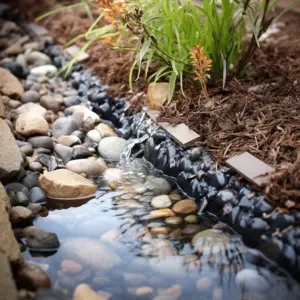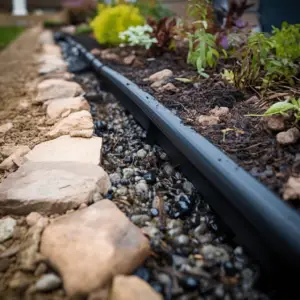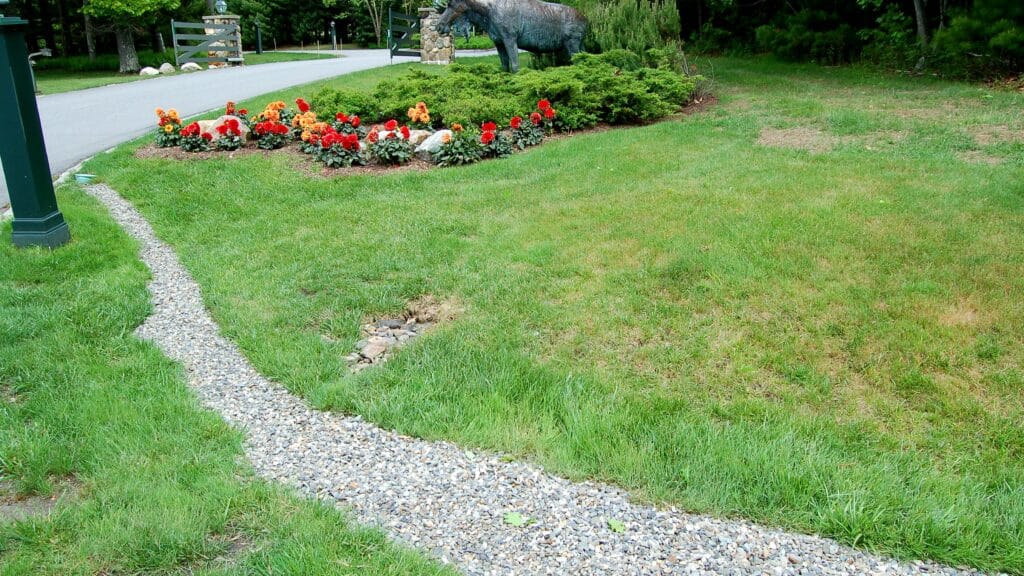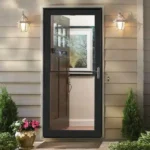If you are interested in installing a French drain, you should know a few essential things.
A French drain appears to be a high-end device. It’s actually just a gravel trench with a pipe placed in it that diverts water away from your house.
Rainwater runs down your roof and collects in gutters. A French drain, on the other hand, drains water on the ground.
After a downpour, for example, you may observe puddles of water forming in your yard. To fix the problem, you can utilize a French drain.
Water seeping into the basement can also be prevented with the use of French drains. This is because French drains help divert the water away from your house foundation, thus preventing it from seeping into your basement.
In this article, we will discuss some common French drain mistakes and how you can avoid them.
Table of Contents
Common French Drain Mistakes and How to Avoid Them

Being Unaware of Zoning Regulations
Your French drain must not disrupt anyone’s property or a public space. Either of these circumstances could land you in hot water with the law. For these reasons, you should always contact the local building authorities in your area.
Drainage projects may be restricted by community rules, building requirements, or zoning laws in your location. As a result, you should double-check your plans with any local homeowners, building, or zoning authorities.
Before you start the project, dial 8-1-1 to reach the “Call Before You Dig” hotline. So that you don’t dig into an underground utility line, the appropriate authorities will mark your land with paint or a flag.
Ignoring the Direction of Water Flow
Here, you’ll want to analyze your yard’s flood-prone zones. Before you begin planning, you must first assess the overall direction of your French drain’s flow. It’s critical that water flows away from your house in the appropriate direction.
It would help if you also considered the consequences of having uncovered gravel in your lawn. You’ll need to consider how it impacts vehicular movement, for example. It would be best to also think about how the gravel will affect your yard’s views and recreational spaces.
Failing to Understand the Slope
A slope is required for a French drain to function effectively. The slope should be descending at a 1% rate. In every 100 feet of French drain, such rate equates to a 1-foot drop.
Alternatively, your land may have a naturally steeper slope, which is perfectly acceptable. It’s vital to remember, though, that a steeper slope generates high velocity. As a result, erosion may occur in the discharge area. Thus the slope of your French drain should be planned correctly.
Not Lining the Trench
Fabric should be used to line your French drain. If at all possible, utilize a continuous swath.
If not, you can overlap cloth pieces by at least 12 inches. However, staples driven into the ground should be used to bind both ends of the fabric. Fold the excess fabric on both sides as you lay it out and trim it later.
It’s also crucial to overlap the cloth in the proper flow direction. To put it in another way, the fabric on the trench’s high side must overlap the material on the low side.
Utilizing the Improper Gravel
For proper permeability and drainage, a suitable drainage rock is essential. As a result, the fill material should be round natural stones.
This type of stone will allow for improved water flow. Additionally, you won’t have to worry about chunks breaking off and blocking the French drain when you utilize the proper type of rocks.
You should try to find 1 1/2 inch Round Rock if possible. For a French drain, washed Round Rock is suitable.
Leaving the Drainpipe Out
A drainpipe is often overlooked when installing a French drain. As a result, the drainage system becomes incapable of handling high water flow.
The purpose of a French drain is to direct surface water that has accumulated to where you want it to go. However, this scenario lowers the French drain’s efficiency in preventing stagnant water.
The majority of French drain pipes have perforations and range in diameter from 4 inches to 6 inches. The pipe’s capacity to carry water away from structures and eliminate pooling is enhanced by these qualities.
It’s preferable to include the drainpipe when installing a French drain. If you fail to do so, you’ll eventually discover that you’ll have to dig up the French drain to install the pipe later, possibly after a big storm.
Directing a Downspout to a French Drain
Many homeowners also connect their gutter spouts to a French drain system. During severe rain, however, these types of systems might become overloaded. A flood of water will eventually enter the drainage system.
Instead, it would help if you put a catch basin in front of the drain field. The French strain can then be tied into the basin. The catch basin also serves as a convenient entry point for clearing away leaves and debris that can block your French drain.
Putting the Pipe Holes in the Wrong Place

Some homeowners make the mistake of pointing the pipe’s holes in the wrong direction. This inaccuracy, however, has a rationale to it.
They want the water to filter as far as possible away from their home. As a result, they’ll direct the holes away from their house. Water, on the other hand, does not work in this manner.
Instead, the pipe’s openings should be facing down. The water level in the French drain should be kept as low as possible. Only by directing the pipe drain holes down can you create this effect.
Final Thoughts
By avoiding these installation mistakes, you may help your drain last longer and avoid having to replace and dig your drain field in a few years.
When building a drainage system, to diagnose how it’s operating or whether it requires additional care, it’s advisable to reach out to local landscaping or waterproofing professionals. The professionals can also help answer any questions you might have about installing a French drain in your specific area.


